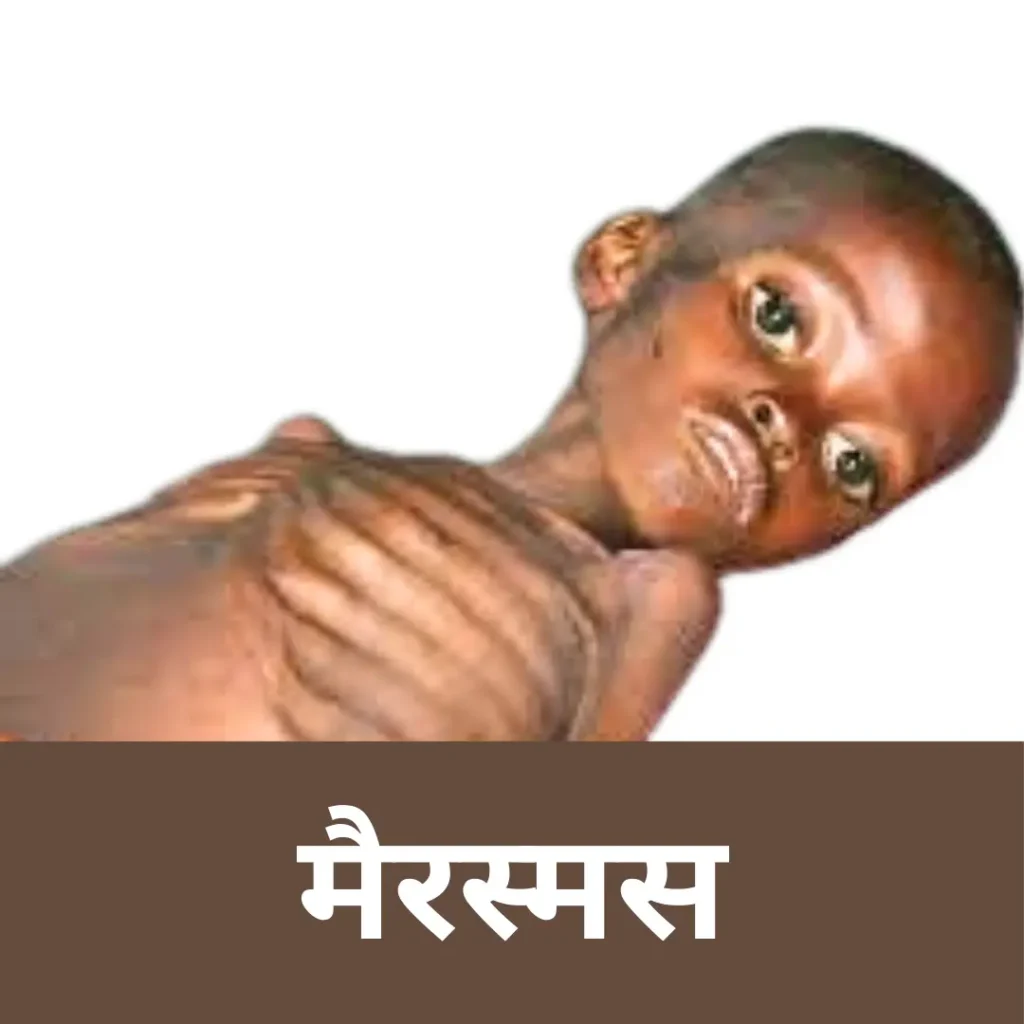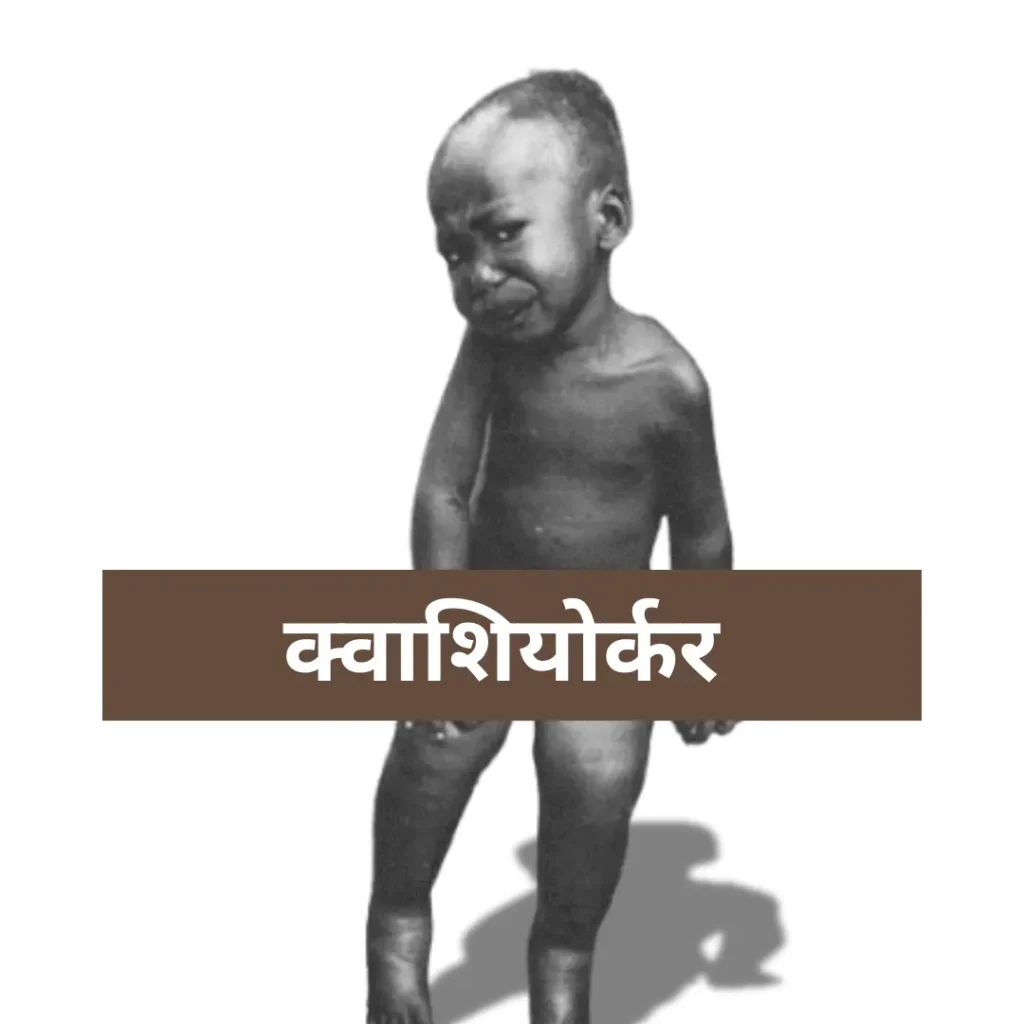(ऊपर दी गयी भाषा में से अपनी भाषा चुनें और अपनी भाषा में आसानी से पढ़ें -Select your language given above and read the article comfortably in your mother tongue.)
What is the full form of PEM?
The full form of PEM is Protein Energy Malnutrition.
What is the full form of PEU?
The full form of PEU is protein-energy undernutrition.
PEU and PEM: What is PEU?
PEU is also a medical condition of energy deficit due to lack of protein and/or calories in the diet (deficiency macronutrients). It comes under the PEM.
वीडियो क्लास देखें
What is Protein energy malnutrition (PEM)?
It is a major public health problem in India and worldwide. It is a medical condition caused by lack of macronutrients (protein and energy) in the diet. It may be caused by a variety of factors given below-
- Food insecurity: The most common reason behind PEM in developing countries is food insecurity. Poverty is very is high in these countries due to which most of the people don’t have enough food to eat which results in the form of PEM.
- Disease: Chronic diseases like HIV/AIDS, tuberculosis, and cancer etc. may causse PEM because these diseases can make it difficult for the body to absorb nutrients.
- Eating disorders: Anorexia nervosa and bulimia nervosa both are eating disorders and both can cause PEM condition. People with these disorders either eat too much and purge or they may not eat enough required food.
- Surgery: Some major surgery too can cause PEM. The body needs extra protein and calories to heal after surgery and if patient does not eat sufficient amount of food enriched with macronutrients, they may develop PEM condition.
- Alcoholism: Alcohol consumption also can interfere with the body’s ability to absorb nutrients and thus it too may cause PEM.
Who gets PEM?
It is a nutritional disorder that can affect people of all ages, including women, children, and men. However, it is most common in children.
What are the types of Protein energy malnutrition (PEM)?
There are two main types of PEM:
1. Marasmus

Frequent infections and inadequate food consumption may bring Marasmus condition. Marasmus generally occurs within the first 2 years of life. This is the most common type of PEM in children. It is caused by lack of both protein and energy. Symptoms of marasmus include weight loss, muscle wasting, and stunted growth.
What are the symptoms of Marasmus?
There are following symptoms of marasmus-
- Very thin: These children have very little fat and muscle under the skin.
- Large head, little hair: These children’s head might appear big in comparison of their thin body, and they may have less hair than normal kid.
- Weight and height problems: These children weighs much less (below 60% of the expected weight) and may be shorter in height than expected for their age.
- Skin problems: Theses children may have some changes in their skin color or develop peeling patches.
- Visible bones: These children’s ribs may stick out because there is not enough muscle or fat under the skin. It may create a bumpy appearance on their chest which is also called as “rickety rosary.”
- Swollen belly: These children’s stomach may be bloated due to weak abdominal muscles and muscle wasting.
- Frequent infections: These children are more likely to fall sick because of a weakened immune system.
- Irritability and crying: These children may be cranky and cry more often.
- Loss of interest: These children may become withdrawn and less playful.
- Changes in face: The fat on the face of these children may be the last area to lose weight, making the child look older than their age. Later, their face may become thin and wrinkled and with bones more prominent.
- Anemia and deficiencies: These children may develop mild anemia and lack of other essential nutrients too.
- Loss of appetite: These children may eat much less than normal children.
- Catch-up growth: The children can experience rapid growth to regain lost weight, when they are properly nourished.
2. Kwashiorkor

This type of PEM is caused by a lack of protein, but enough calories. Symptoms of kwashiorkor include edema (fluid buildup), fatty liver, and skin changes. Generally it is seen in the children above age group of 1 year. These babies are also known as Sugar Babies.
What are the symptoms of Kwashiorkor?
The symptoms of Kwashiorkor are give below-
There are three main signs of kwashiorkor:
- Stunted growth: These children doesn’t grow in height and weight as expected.
- Swelling (oedema): In this condition fluid builds up in the body, especially the feet, legs, and face which can make the weight seem higher than it actually is.
- Mental changes: These children may be listless, withdrawn, or irritable.
There are many other symptoms of kwashiorkor:
- Weight loss: The children weigh much less than expected for their age (often below 60%), Even with swelling.
- Height problems: The children’s height is affected more than in other forms of malnutrition.
- Swollen belly: The bloated abdomen that is fluid buildup inside the abdomen (ascites) is less common.
- Enlarged liver: The liver gets bigger due to fat deposits in it.
- Moon face: The face of the children affected by it is puffy due to swelling on it.
- Hair loss: Dry, brittle, and patchy hairs are seen in the children.
- Skin changes: Discolored patches, peeling, and even ulcers may be found on the skin.
- Loss of appetite: The children may have developed anorexia (don’t want to eat much).
- Diarrhea: It may occur due to defective digestion and absorption as a result of secondary infection.
- Anemia: Iron and folate deficiencies.
What are the complications of Protein energy malnutrition (PEM)?
It can lead to a number of serious health problems, some of them are given below-
- Weakened immune system
- Increased risk of infection
- Slowed growth and development (Stunting)
- Muscle wasting
- Heart problems
- Liver problems
- Death
How to prevent Protein energy malnutrition (PEM)?
There are a number of things to prevent PEM and some of them are given below-
- Promote breastfeeding: Mother milk is the best and approximately complete source of nutrients for infants and young children. WHO recommends for breastfeeding to infant and young child till at least 2 years of age but there is no upper limit prescribed or recommended by WHO. It shows the importance of breastfeeding.
- Ensure that children have access to a variety of foods rich in Macro and Micro Nutrients: The Macro and Micro Nutrients rich foods are fruits, vegetables, whole grains, and lean protein.
- Fortification of foods: Fortification of foods increase the nutritive value of the food items which can be done by enriching foods with vitamins and minerals.
- Providing micronutrient supplements: It should be done in those areas where there is a high prevalence of micronutrient deficiencies.
Treatment of PEM
Treatment of PEM depends on the severity of the condition. Following steps can be taken to treat it-
- Dietary supplements: This can include providing children with high-calorie, high-protein foods or supplements.
- Intravenous feeding: This may be necessary for children who are unable to eat or drink.
- Treatment of underlying medical conditions: If PEM is caused by an underlying medical condition, such as an infection, the underlying condition must be treated.
It is a preventable and treatable condition. With the right interventions, we can help the children to grow and thrive.
What are the government of India Schemes/Yojana to fight with malnutrition?
The government of India is very serious about fighting malnutrition in India. There are several schemes run by govt of India to fight with malnutrition such as; National Nutrition Mission (NNM), Poshan Abhiyan, and ICDS.
There are several programs to help, especially young children and mothers. Lets have a look-
- Anganwadi Services: This program provides food and care for children under 6, pregnant women, and new mothers. They get extra nutritious meals to take home.
- Pradhan Mantri Matru Vandana Yojana (PMMVY): This program gives pregnant women and new mothers some money to help them afford healthy food and care for their babies.
These programs are part of a bigger effort called POSHAN Abhiyaan. This program aims to improve the health of teenage girls, pregnant women, and new mothers by giving them the nutrients they need. They recently launched Mission Poshan 2.0, which focuses on making sure these programs deliver better quality food, reach more people, and have better results. They’re also working on making sure the food is nutritious and testing it in special labs.
The National Health Mission is also helping fight malnutrition in children and mothers:
- Teaching parents how to feed babies: Workers working under NHM teaches to parents the best ways to feed their babies, including starting breastfeeding right away, only breastfeeding for the first 6 months, and giving extra healthy foods after 6 months.
- Training doctors and nurses: NHM focus on special training of doctors and nurses to learn how to treat common illnesses and malnutrition in babies and young children.
- Special clinics for severe malnutrition: If a child is very malnourished, they can be treated in special clinics called Nutrition Rehabilitation Centers. There are over 875 of these clinics across India!
- Vitamins for everyone: Workers working under NHM provides special vitamins to young children, older children, and even teenagers to make sure they get everything they need to grow healthy.
- Special days for health checks: Workers working under NHM have special pre decided days in villages where doctors and nurses can check the health of children, pregnant women, and new mothers. They also give them a special card to track their health.
There are some additional resources that may be helpful for you:
- World Health Organization (WHO) – Protein-energy malnutrition
- UNICEF – Malnutrition
- Helen Keller International – Protein-energy malnutrition
Disclaimer:
While we have made every effort to provide accurate information, as humans, errors may occur unintentionally. Please verify the information from your sources as well.
Follow us:
If you are a home science student, and you are preparing for TGT, PGT, UGC NET and Assistant professor exams with home science subjects, then keep following us for such informative articles. You can follow us on our YouTube channel https://www.youtube.com/@mitaksharaacademy and our website https://mitaksharaacademy.com/. For any inquiries related to home science, you can contact on WhatsApp 9451316873.
Share this information:
Share this information with those who are looking for it. Don’t forget to give your feedback 🙂
Discover more from Mitakshara Academy
Subscribe to get the latest posts sent to your email.
